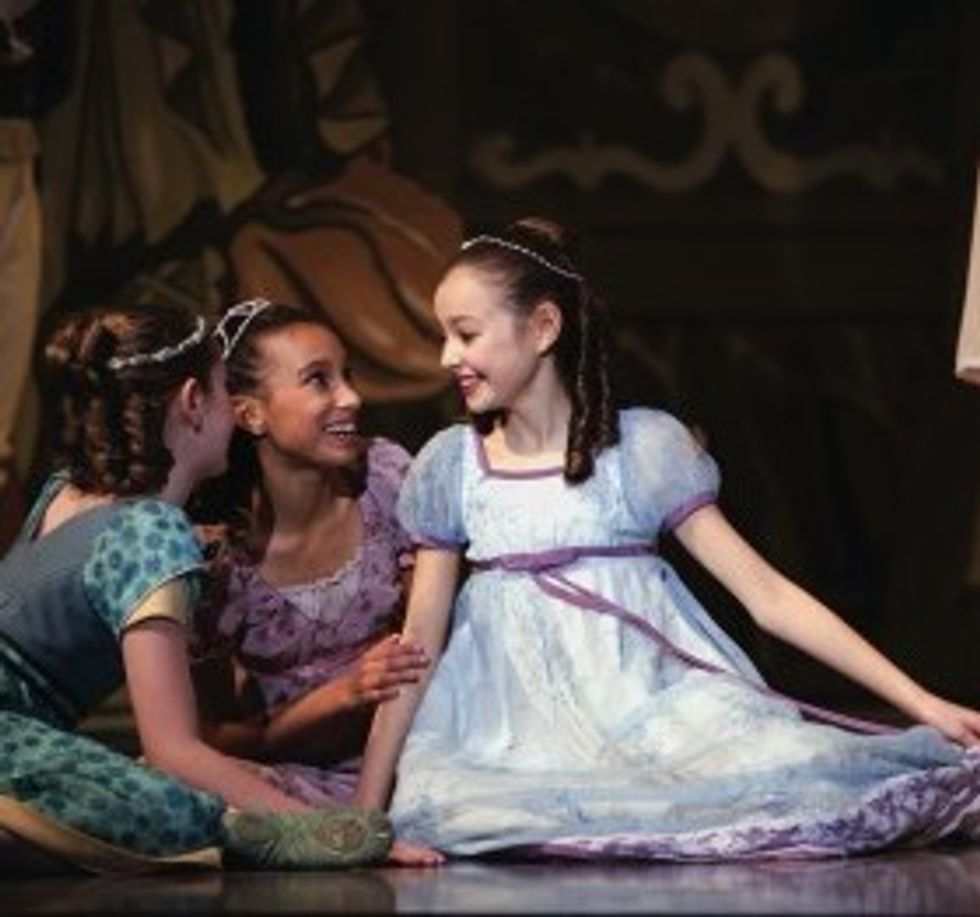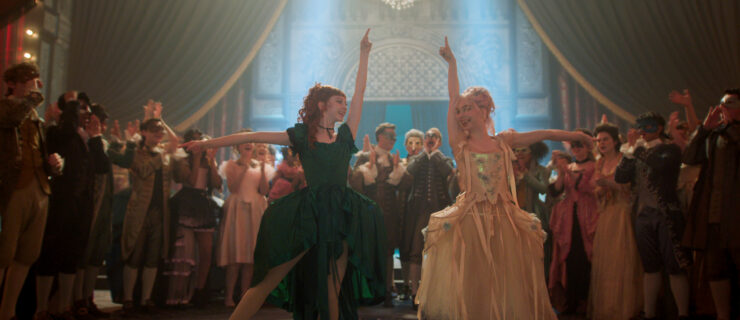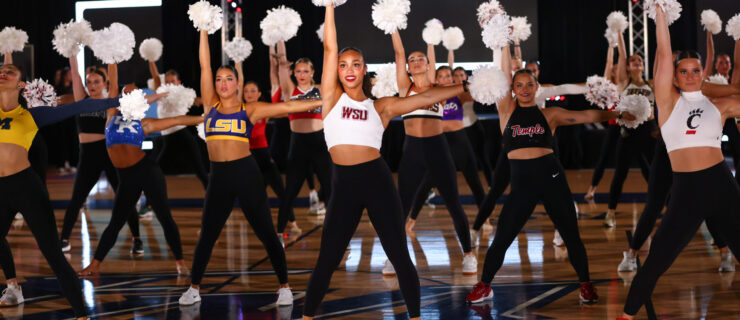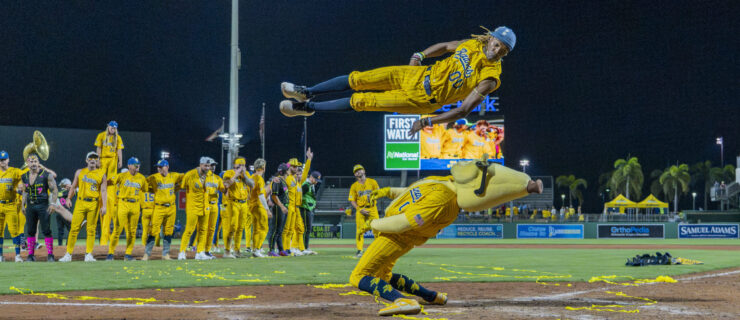Meet Clara

You might not guess it if you saw her perform today, but Elizabeth Gaither of The Washington Ballet started her Nutcracker career wearing a pair of knickers—as a little boy in the party scene. But it wasn’t long before she got to don the coveted party dress worn by the ballet’s lead, Clara. At age 12, Gaither took center stage with students from her mother’s studio, The Miami Conservatory, in the first of many Clara performances of her career; she later danced the role with Houston Ballet at 16, and with American Ballet Theatre in her early 20s.

As many times as Gaither tackled the role, it never became boring. “There’s lots to explore with Clara,” she says. “She’s in so many scenes and has so many different emotions. Also, I love roles where the character carries the ballet from start to finish.” Clara is joyful in the party scene, fights bravely in the battle between the mice and toy soldiers, then travels through the Land of Snow to the Kingdom of the Sweets. She’s also one of the few ballet leads who remains onstage for almost the entire production.
Gaither’s not the only professional who has fond memories of her Clara days; dancers around the world cite this role as the one that started it all, their first chance to carry the narrative of a ballet—a great opportunity for any aspiring pro! This month, hundreds of dancers will try on Clara’s slippers for the first time—and thousands more will watch from the audience, dreaming of the day when it might be their turn. So what makes Clara—or Marie, as she’s also known—so iconic? DS investigates.
Where She Came From
The Nutcracker
ballet was adapted from an 1816 short story, “The Nutcracker and the Mouse King,” by German author E.T.A. Hoffmann. In this story, a young girl, Marie, learns the tale of the Nutcracker—which involves a cursed princess, the Mouse Queen and her seven-headed son, Drosselmeyer’s nephew and the world’s hardest-to-crack nut. (For the entire story, check out the English translation with illustrations by Maurice Sendak, simply titled Nutcracker.) Hoffmann’s Marie is very similar to the ballet’s Clara/Marie character. However, in the short story, Clara is the name of one of Marie’s dolls.
So why did “Clara”—not “Marie”—become the preferred name for the ballet’s main character? No one really knows. (In Russia, where the ballet originated, she’s known as Masha.) What is documented is the famed collaboration between Marius Petipa and Peter Ilyich Tchaikovsky that first brought Hoffmann’s strange story to life onstage. Since the heroine of the story was a child, one of Petipa’s important additions was the role of the Sugar Plum Fairy featuring a virtuoso principal dancer. The ballet premiered in 1892 with choreography by Petipa and his assistant Lev Ivanov (who took over when Petipa became sick). Its first performance in the U.S. was danced by San Francisco Ballet in 1944. The name “Marie” made its comeback in George Balanchine’s New York City Ballet version, which premiered at New York City Center in 1954. Since then, The Nutcracker—with either Clara or Marie—has been a holiday tradition.
How She’s Danced
Choreographers continue to search for new spins on the classic Nutcracker story, but one of the biggest decisions concerns who’s actually performing the part of Clara. It’s sometimes danced by a girl close to the character’s age, which is around 12 years old. In this scenario, “Clara’s role is of a girl on the cusp,” explains Jennifer Fisher, author of the book Nutcracker Nation. “She’s dedicated [to protecting the Nutcracker] but still youthful and enthusiastic. She shows that you can be fun and serious at the same time.”
Other productions cast a professional dancer with the chops to pull off more challenging choreography. She may look a bit older than her onstage “friends,” but The Joffrey Ballet’s artistic director Ashley Wheater points out that a mature dancer can enhance the character. “I’ve seen older dancers play 16-year-old Juliet so convincingly,” he says, “because they understand what it’s like to be that child. It’s the same in Nutcracker. An experienced dancer can re-create the magic of her childhood.”
Still other productions have two dancers split the role: A child Clara played by a young dancer transforms into an adult, often before the snow scene. Alexandra Dickson, a former Pacific Northwest Ballet dancer who has coached young Claras for PNB’s Nutcracker, explains that this choice taps into a child’s desire to be grown-up. “Every girl wants to be a little bit older,” Dickson says. “How great would it be to live Clara’s dream and have those cool, grown-up experiences—wearing the beautiful glittery dress, dancing in the snow—but then have the safety of coming home to your parents when the dream is through?”
The common thread throughout these different takes on Clara is obvious: magic. Regardless of who’s playing the part, Wheater says it’s most important that the dancer truly believe in the story—and Clara’s youthful innocence and enthusiasm. “You want someone who can take the magic and make the audience believe it, too,” he says. “Clara’s story has to be infectious.”
Why We Love Her
Clara’s allure for young dancers goes beyond the fact that she’s a role they might conceivably dance in a few years. For one thing, Clara is relatable. The story unfolds through her eyes, which allows the audience to imagine how they’d respond if they were in her shoes. Dickson asks the Claras she coaches, “If this were your reality, what would you do? If you were in a room and the tree was growing, how would you react?” And, many elements of Clara’s story—she’s at a party, she has an annoying little brother, she receives a toy that gets broken, she has a fantastic dream—are universal.
But if you look deeper, you’ll also find a character with many admirable qualities that have nothing to do with dance. “Clara is a role model in ruffles,” explains Fisher. “She’s a sweet, optimistic little girl, but she’s also determined, ambitious and talented. Young girls can aspire to be like her—onstage and off.”
Current Claras

Annastasia Beller,
9, will play Marie in Oregon Ballet Theatre’s George Balanchine’s The Nutcracker
Past Nutcracker experience: Three years as an angel, and one as a party girl and soldier.
What are you looking forward to?
“I’m looking forward to throwing my shoe at the Mouse King!”
What do you think the challenges will be?
“The hardest part about being Marie will be sitting still while everyone else is dancing. I hope I can keep my feet still. I think they are going to want to ’dance’ all of the roles!”
Stephanie Bandura,
11, will play Marie in the Pennsylvania Ballet’s production of George Balanchine’s The Nutcracker.
Past Nutcracker experience: Two years as an angel and one year as a party girl.
What are you looking forward to?
“I can’t wait to be Marie and have everyone looking at me, instead of being in the background!”
What do you hope to bring to the role?
“I want people to feel like it’s real, not just acting. And I want them to enjoy the ballet!”

Jessica Cohen,
17, played Clara in San Francisco Ballet’s The Nutcracker in 2007 and 2008.
Favorite part of playing Clara:
“Clara is a young girl so you can put yourself into the role. It’s about innocence, seeing something magical occur and going on a journey. The first time I opened my eyes and everything had changed in the living room onstage, it was spectacular. I’ll never forget it.”
Clara Challenges:
“It’s show business, so you never know what will happen. There’s a couch that moves Clara around the stage as the living room transforms. One time it broke—but the show must go on!”
From Clara to Sugar Plum and Dew Drop: Three professionals look back on the coveted role.
Jennie Somogyi
Now: Principal, New York City Ballet
Then:
Marie in NYCB’s Nutcracker twice, at ages 9 and 10
“I always enjoy Nutcracker because I have memories of doing it as a child. Dancing that part felt like being in an elite club—and it was overwhelming. One of the biggest rewards of being Marie is that in the second act, you get to watch all the professionals dance up close. When I joined NYCB, the people that I’d watched from the throne and idolized—like Darci Kistler and Kyra Nichols—became my coworkers!”
Julianne Kepley
Now: Soloist, San Francisco Ballet
Then:
Clara in Atlanta Ballet’s Nutcracker at ages 9 and 10
“It was motivating to have the chance at 9 years old to taste what it’s like to be the focus of a show. During one scene in the first dress rehearsal, it came over me that I was the only person onstage, and I got so excited I almost forgot what I was doing. I was thinking ‘I like this, I want to do this, so I have to do everything right’—and then I almost ran the wrong way!”
Jade Payette
Now: Company member, The Washington Ballet
Then:
Clara with California’s Festival Ballet Theatre’s The Nutcracker, from ages 13 to 16
“I’d always wanted to dance this role and when I got it I was in tears, I was so happy. Because I did it for four years, I was able to grow into it and add different things over time. The great part about a role like Clara is that you’re able to experiment with acting. You can figure out what kind of girl you are—a happy Clara, a brave Clara, a scared Clara. Being given the chance to do that as a young person helped me learn how to become different characters onstage.”




